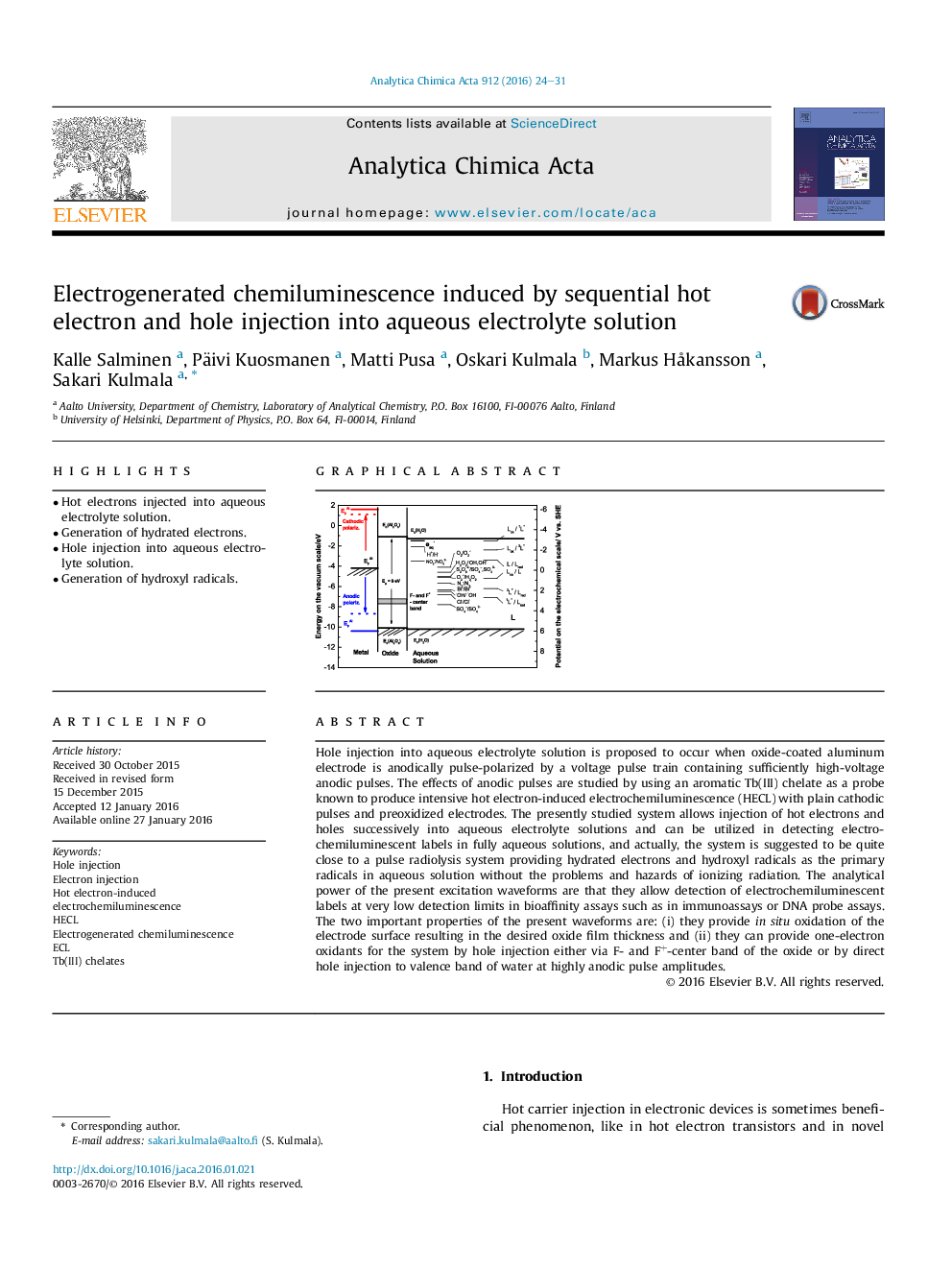| Article ID | Journal | Published Year | Pages | File Type |
|---|---|---|---|---|
| 1163051 | Analytica Chimica Acta | 2016 | 8 Pages |
•Hot electrons injected into aqueous electrolyte solution.•Generation of hydrated electrons.•Hole injection into aqueous electrolyte solution.•Generation of hydroxyl radicals.
Hole injection into aqueous electrolyte solution is proposed to occur when oxide-coated aluminum electrode is anodically pulse-polarized by a voltage pulse train containing sufficiently high-voltage anodic pulses. The effects of anodic pulses are studied by using an aromatic Tb(III) chelate as a probe known to produce intensive hot electron-induced electrochemiluminescence (HECL) with plain cathodic pulses and preoxidized electrodes. The presently studied system allows injection of hot electrons and holes successively into aqueous electrolyte solutions and can be utilized in detecting electrochemiluminescent labels in fully aqueous solutions, and actually, the system is suggested to be quite close to a pulse radiolysis system providing hydrated electrons and hydroxyl radicals as the primary radicals in aqueous solution without the problems and hazards of ionizing radiation. The analytical power of the present excitation waveforms are that they allow detection of electrochemiluminescent labels at very low detection limits in bioaffinity assays such as in immunoassays or DNA probe assays. The two important properties of the present waveforms are: (i) they provide in situ oxidation of the electrode surface resulting in the desired oxide film thickness and (ii) they can provide one-electron oxidants for the system by hole injection either via F- and F+-center band of the oxide or by direct hole injection to valence band of water at highly anodic pulse amplitudes.
Graphical abstractFigure optionsDownload full-size imageDownload as PowerPoint slide
